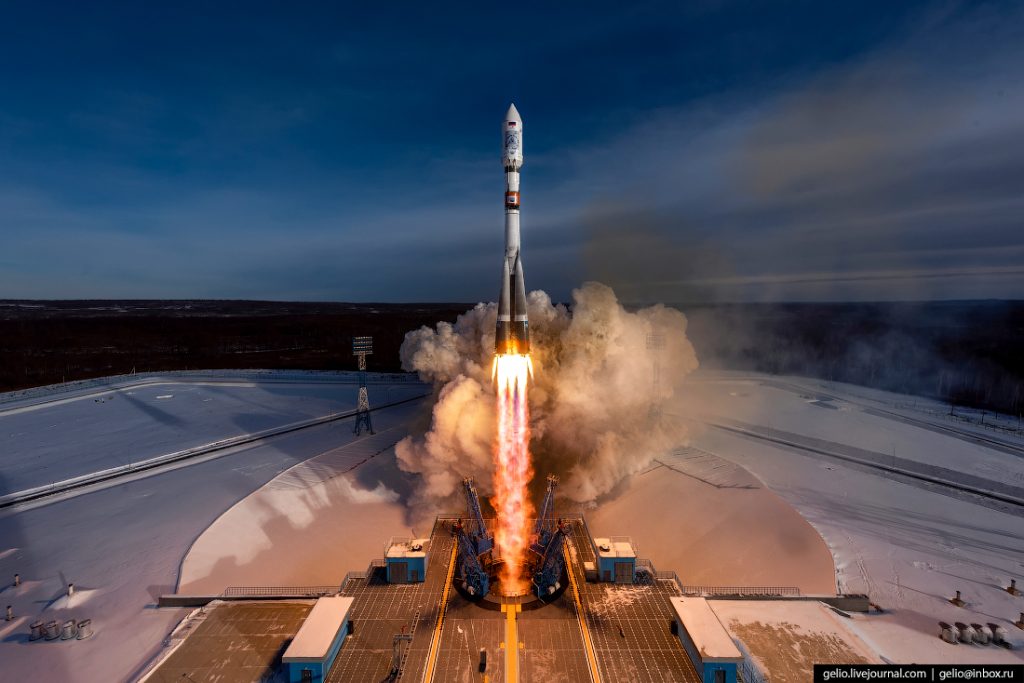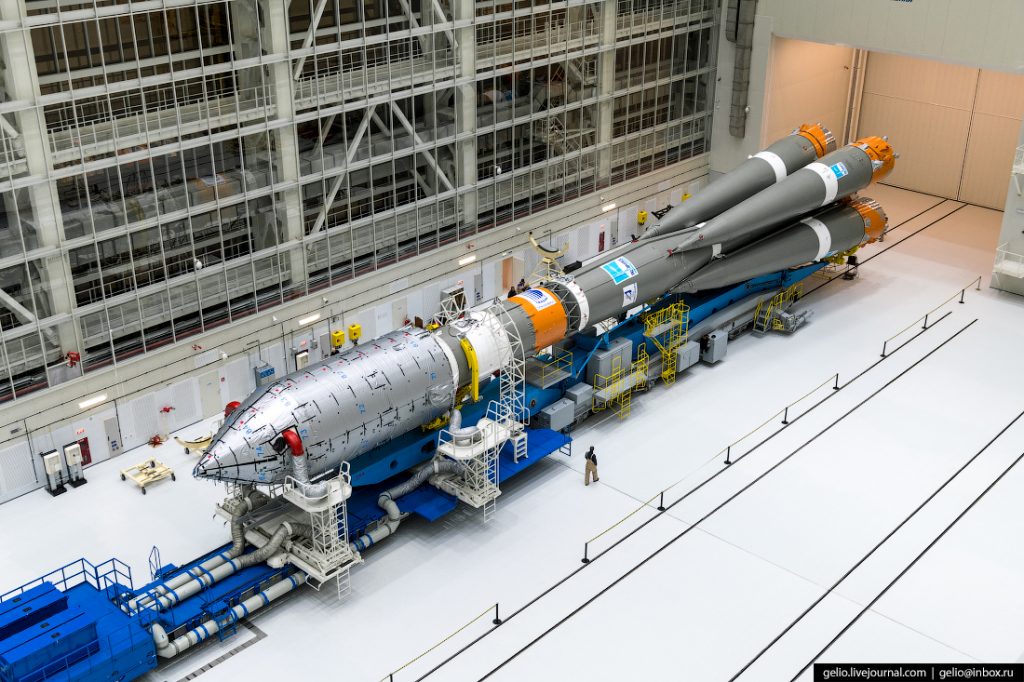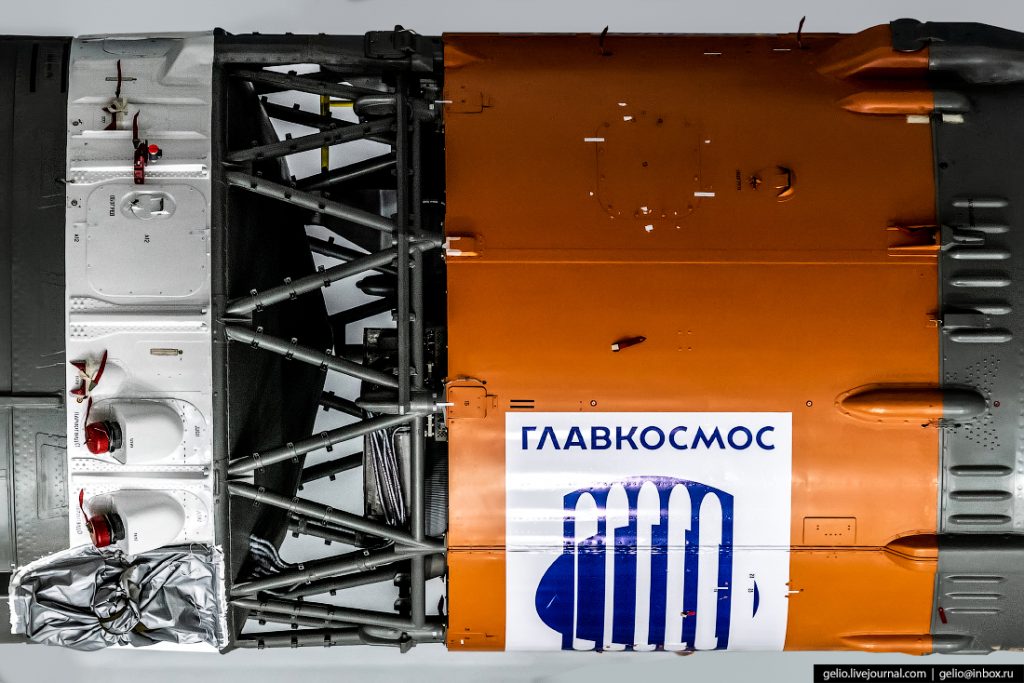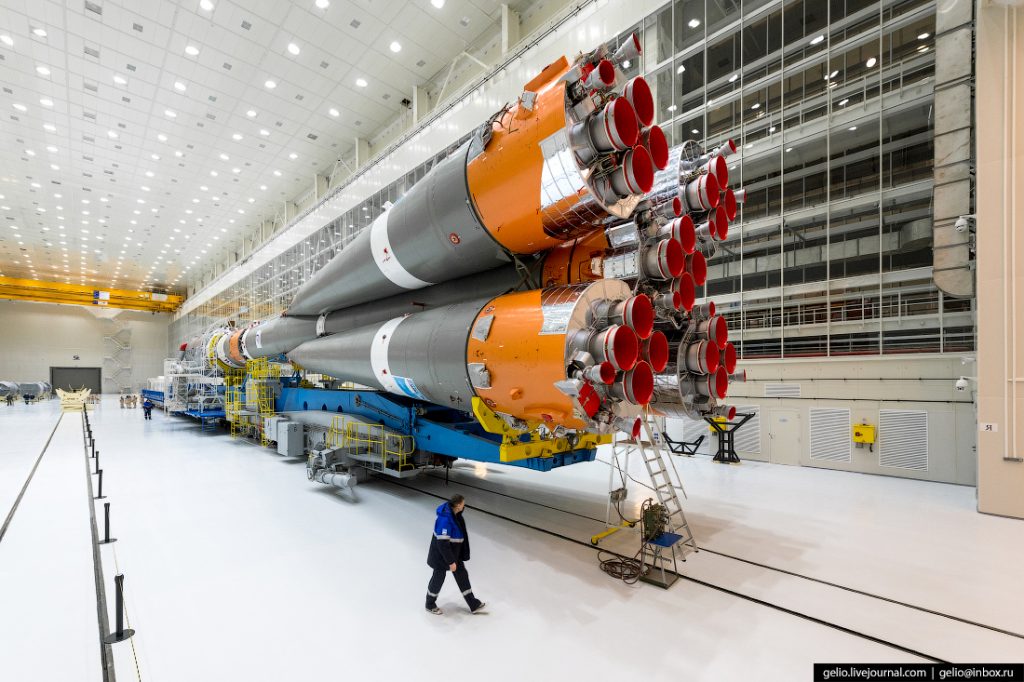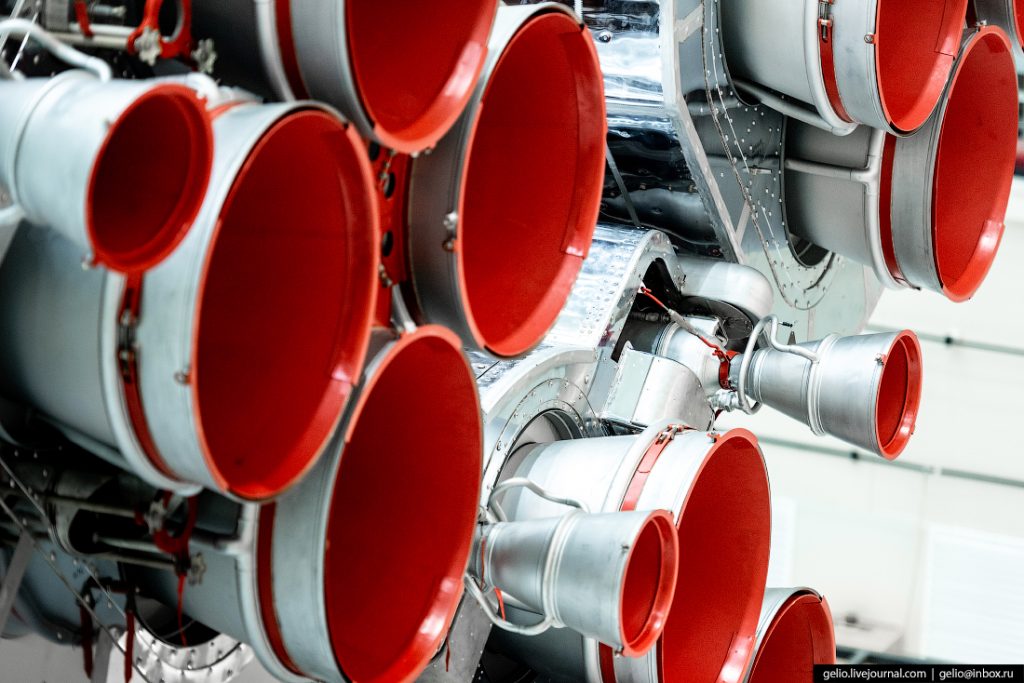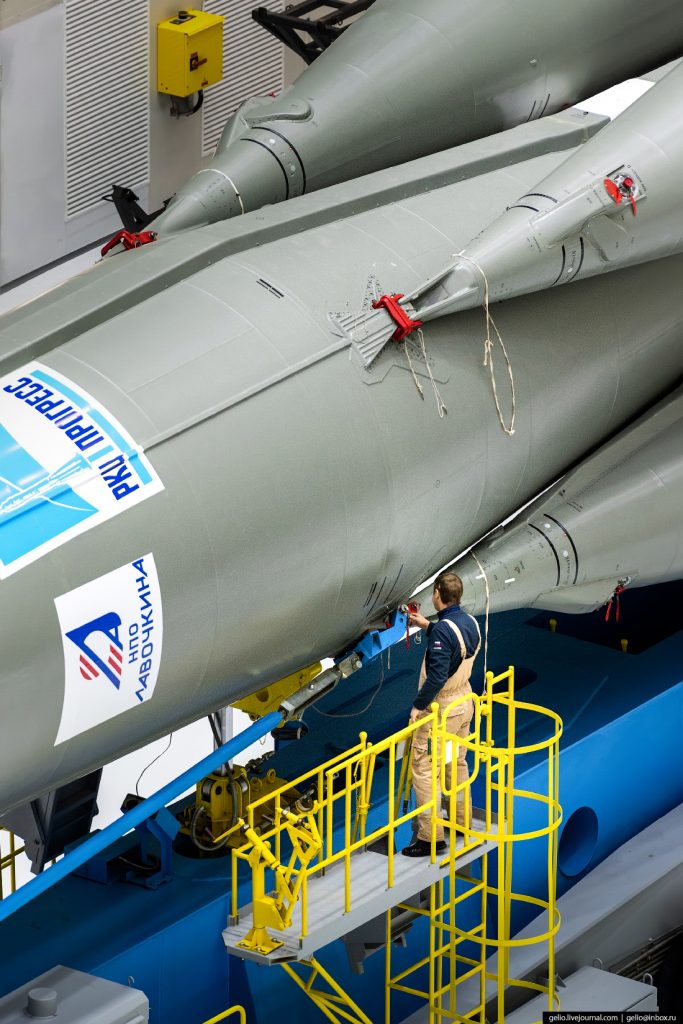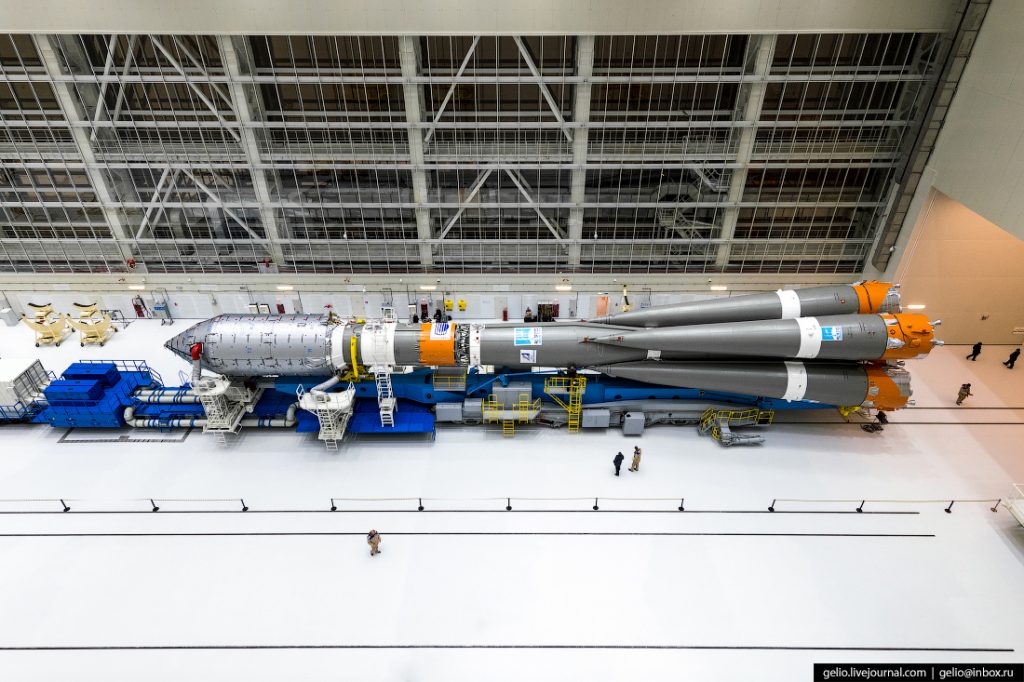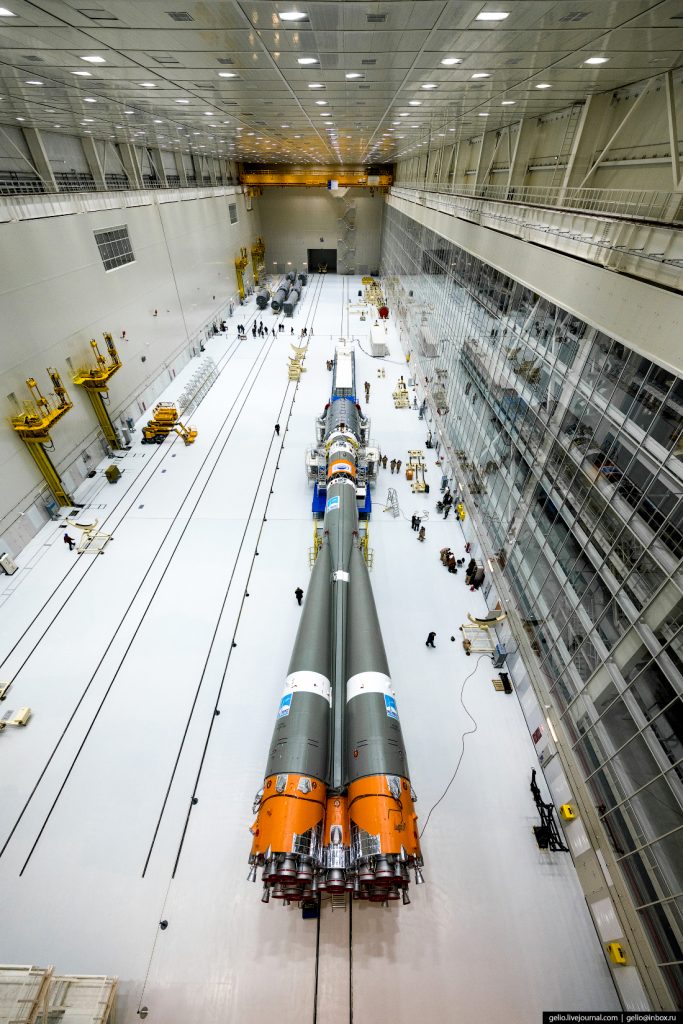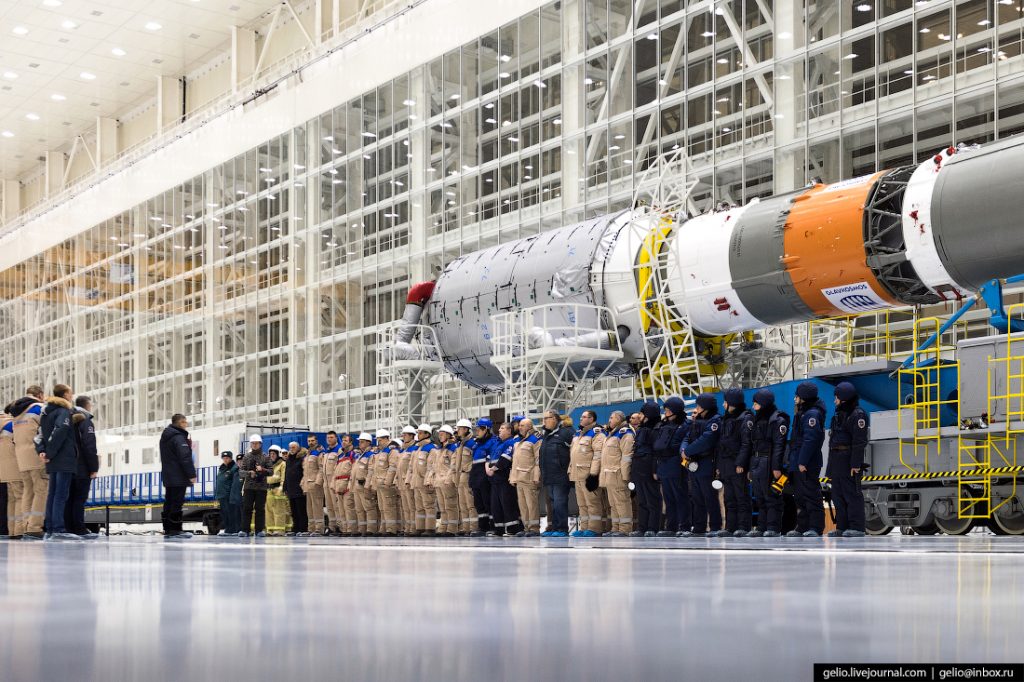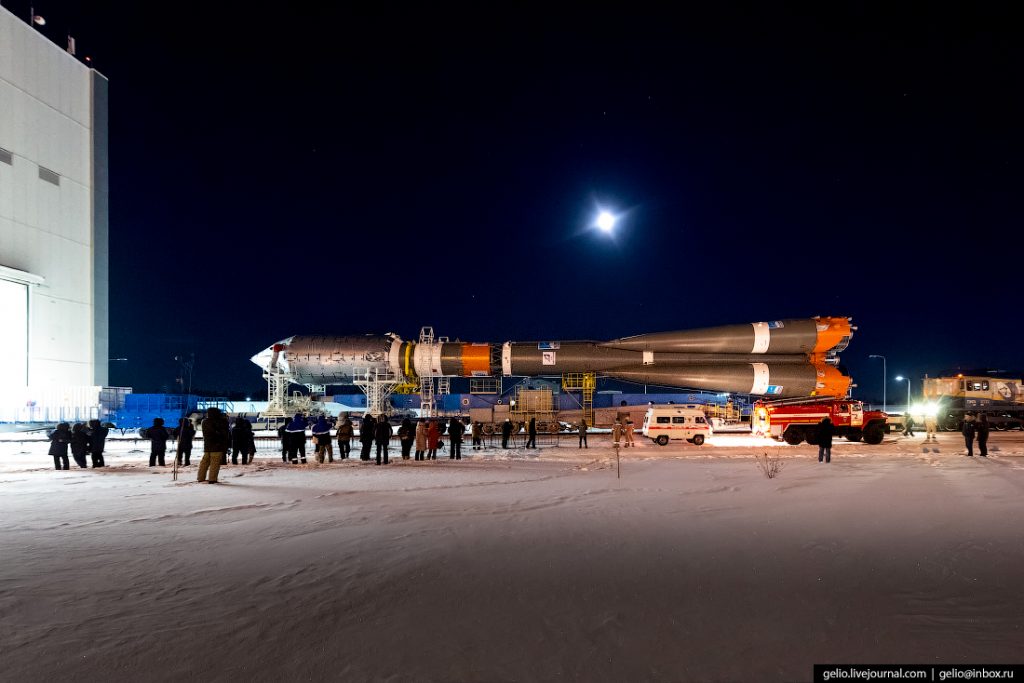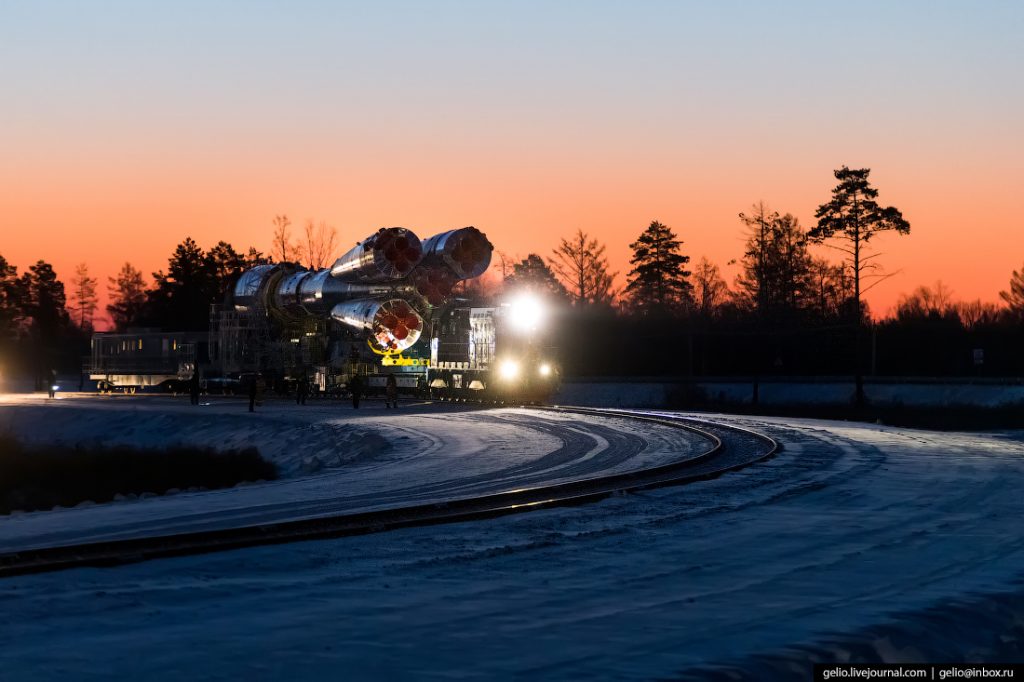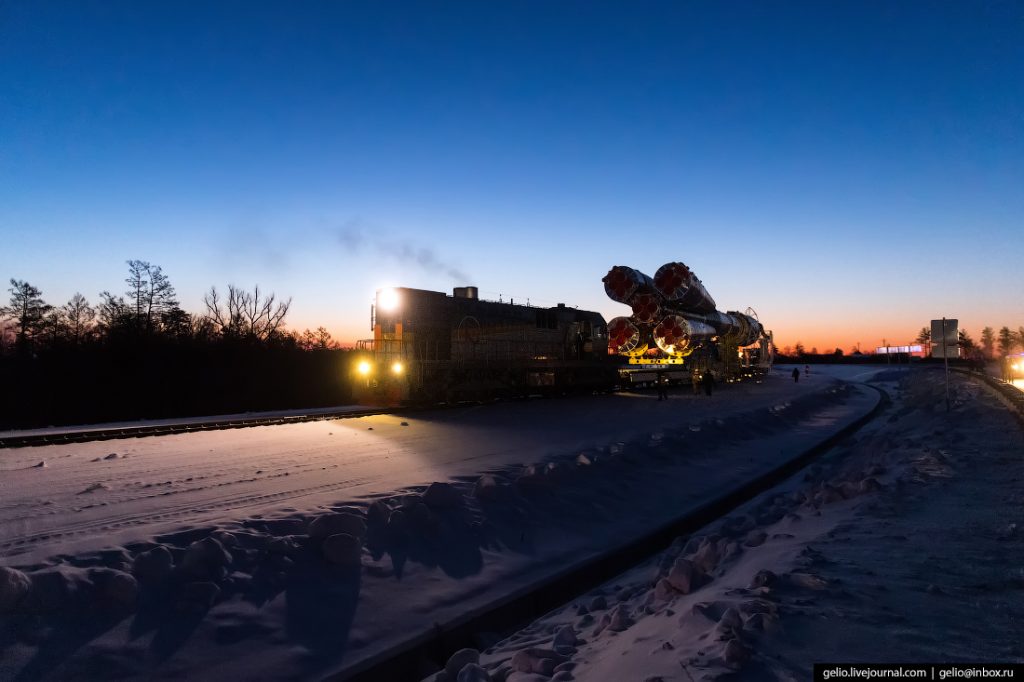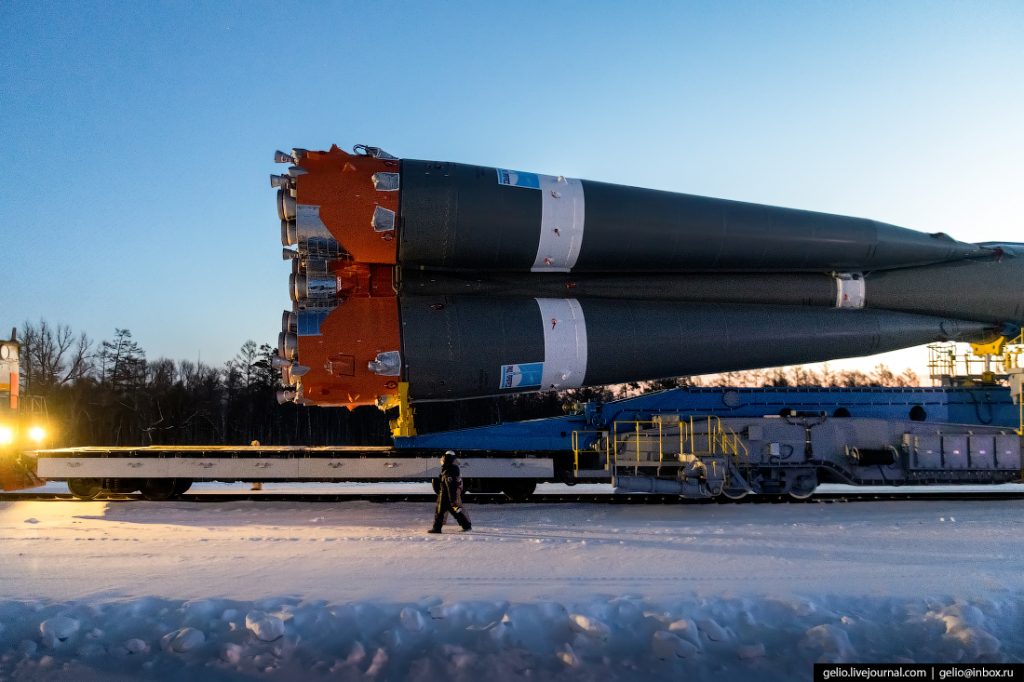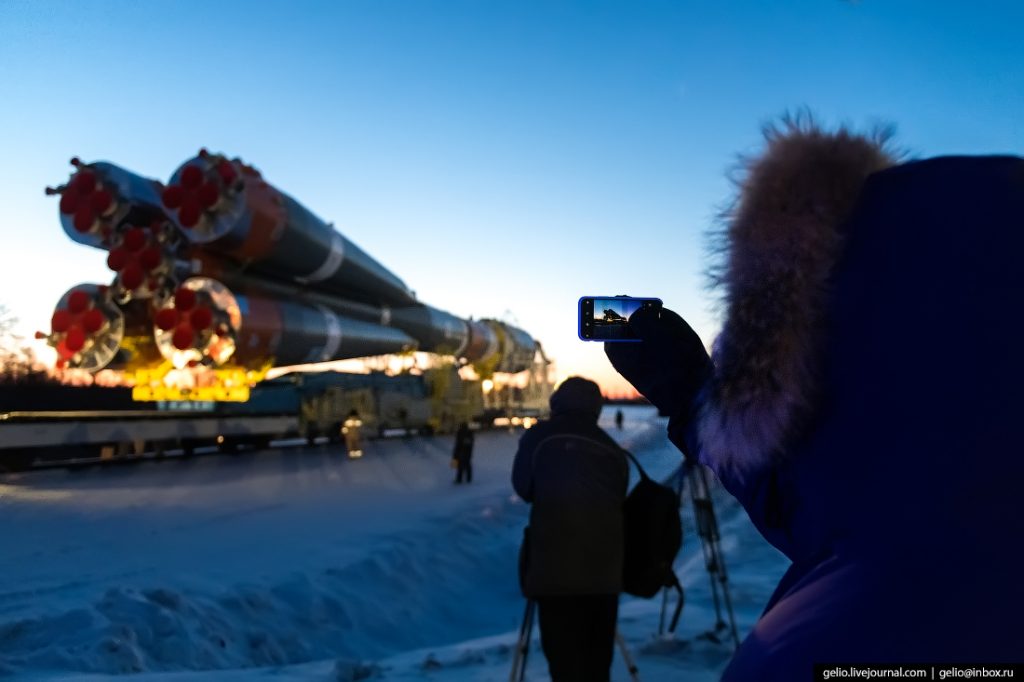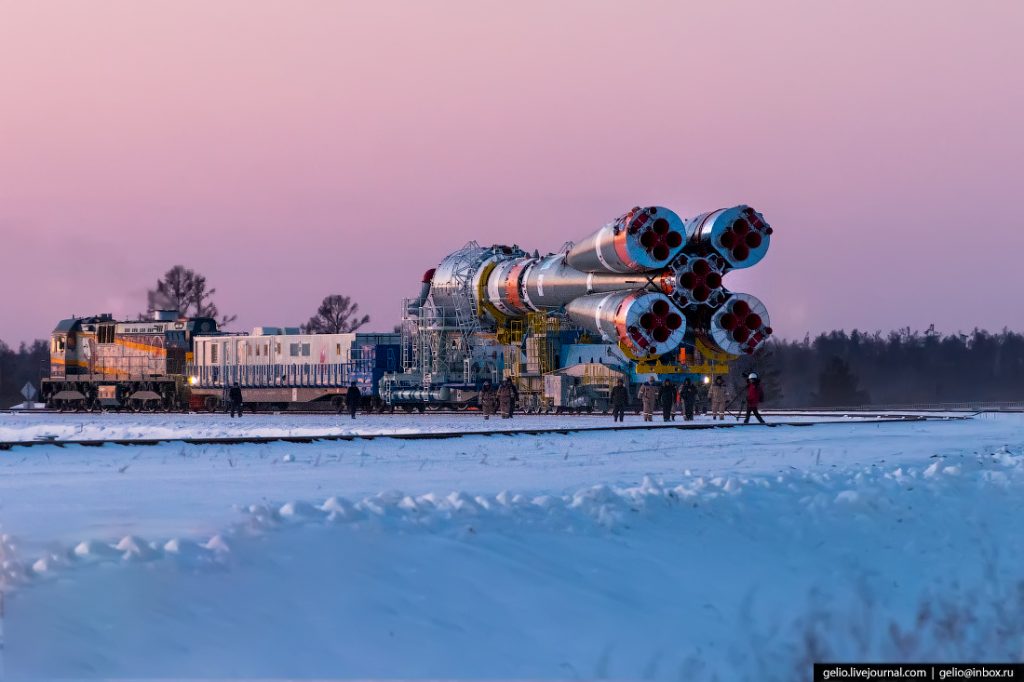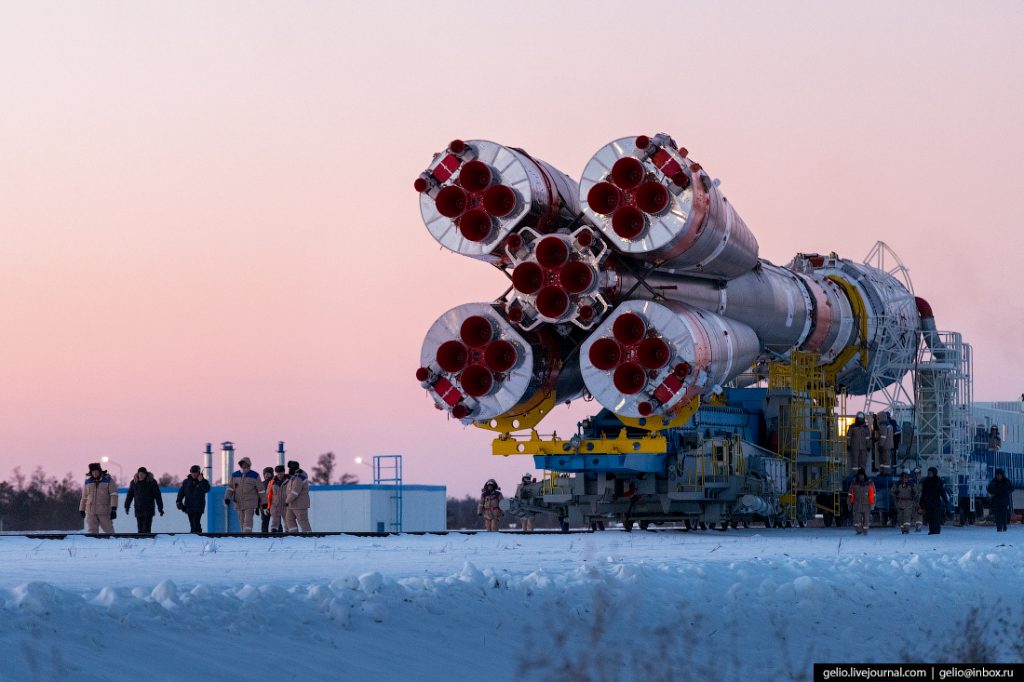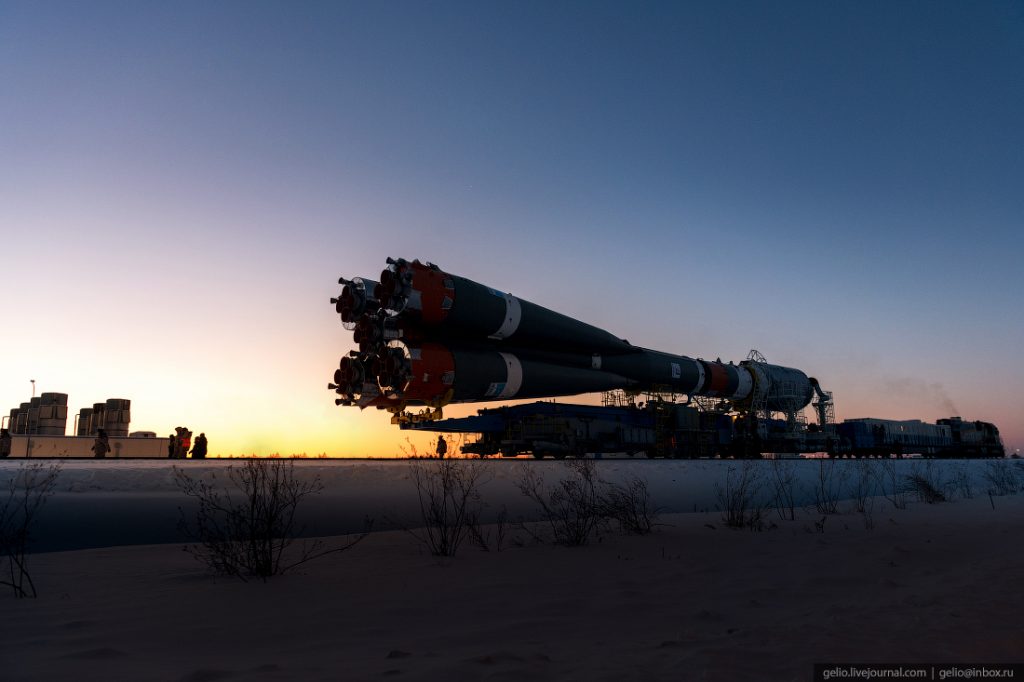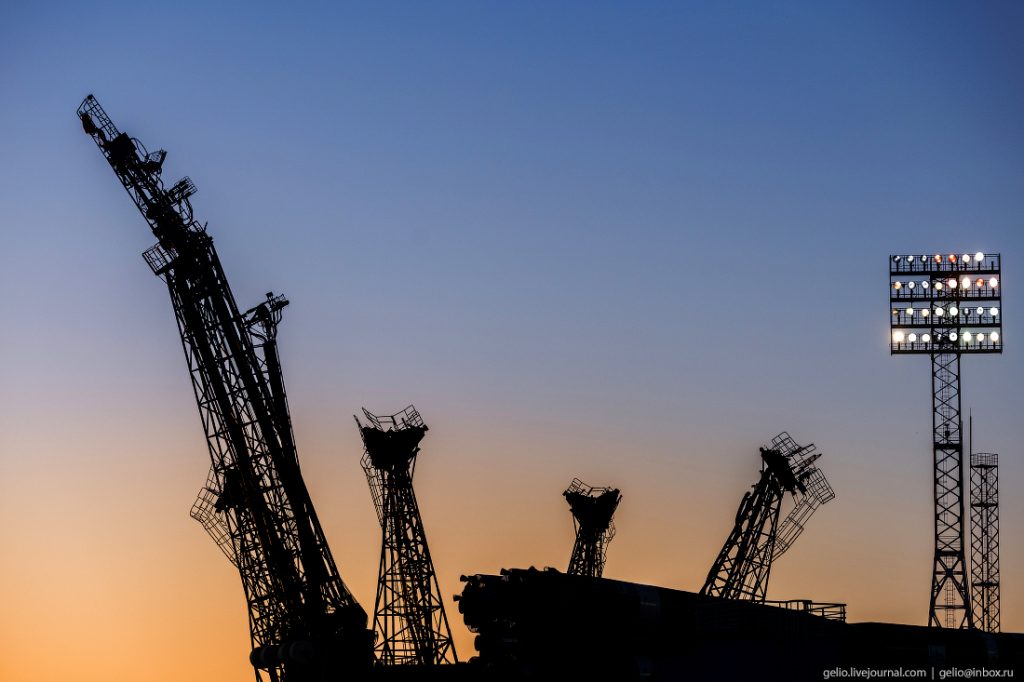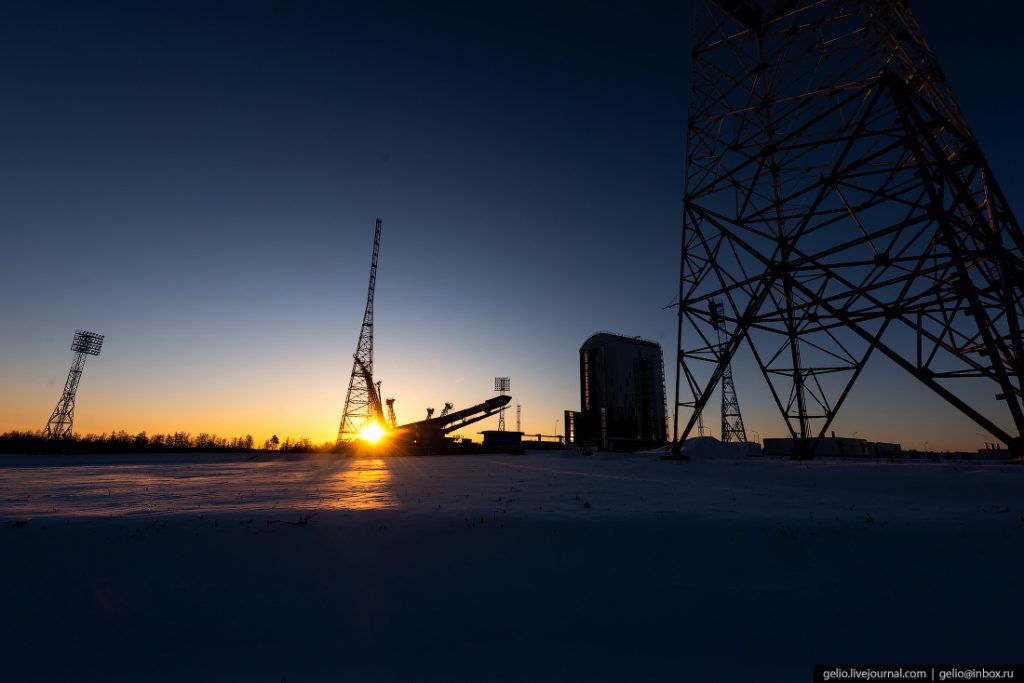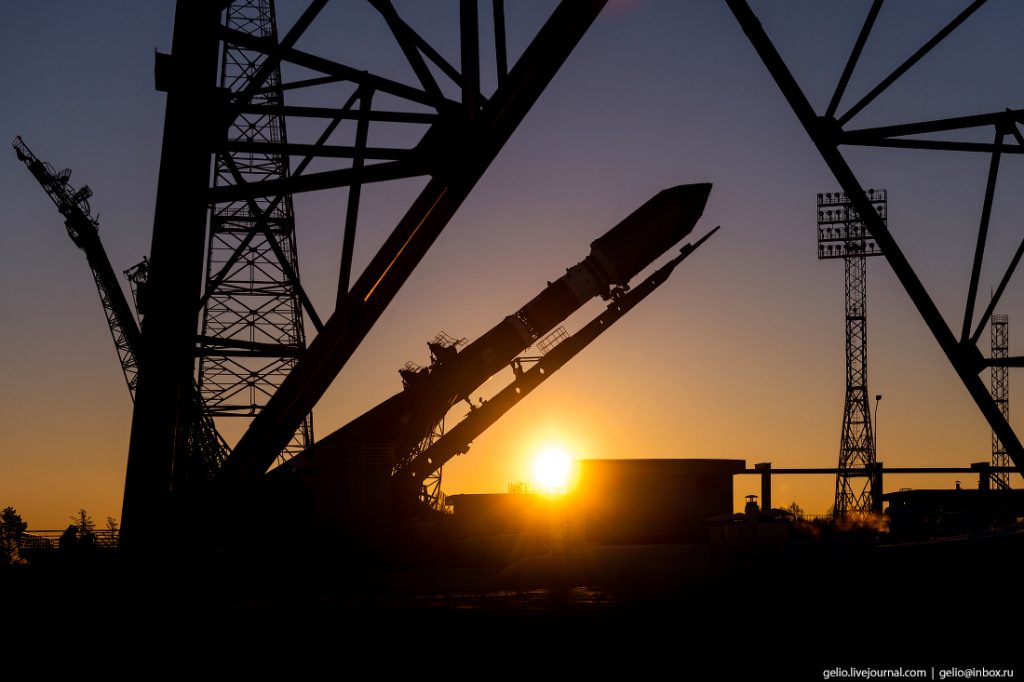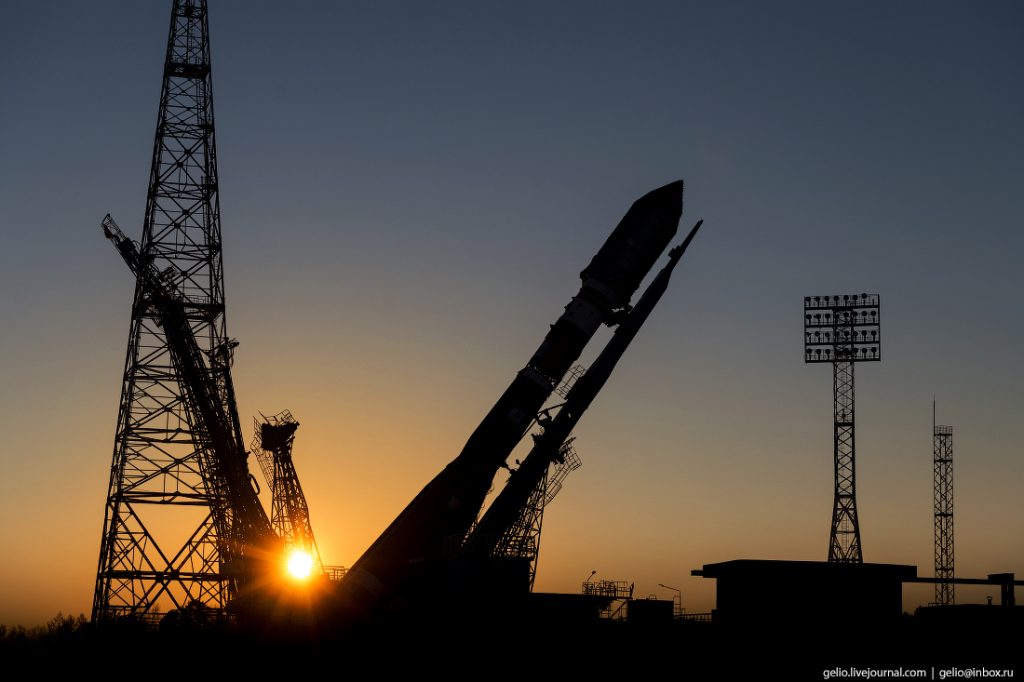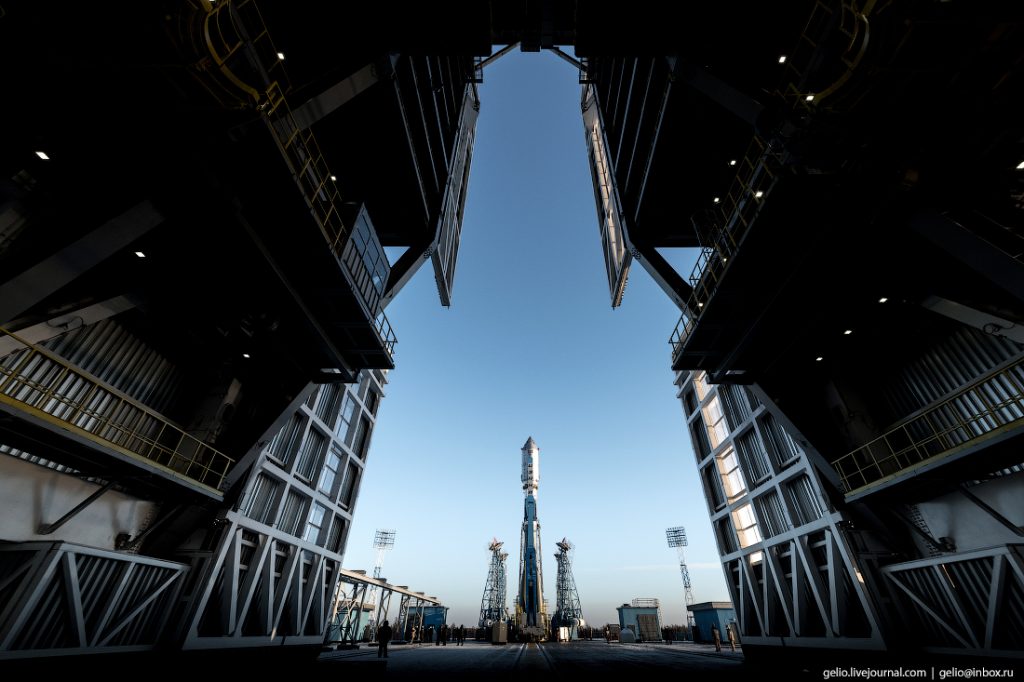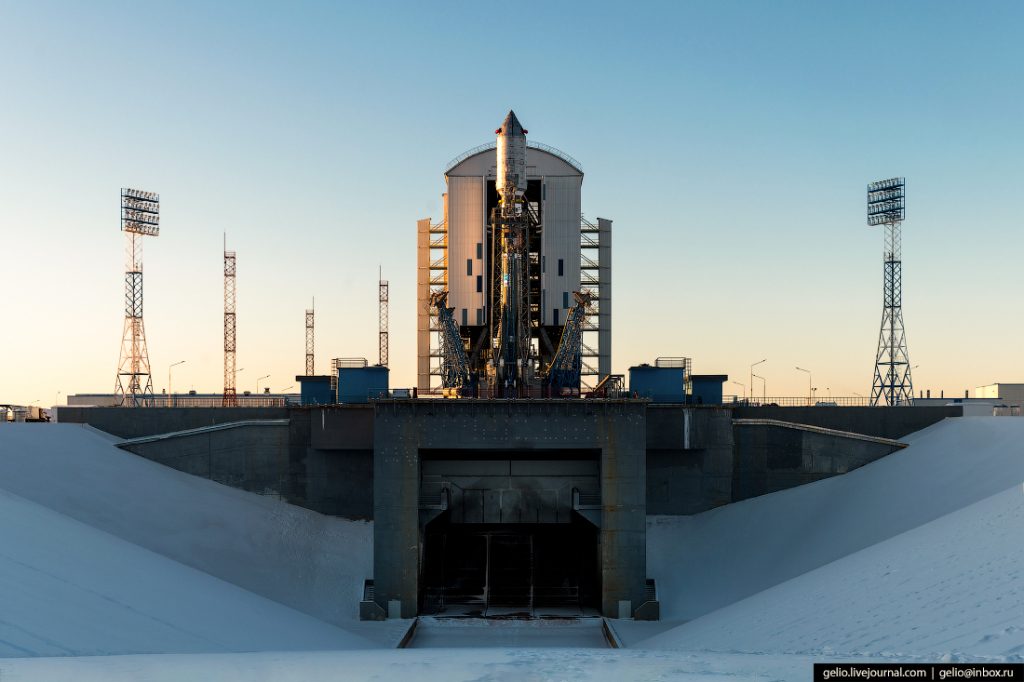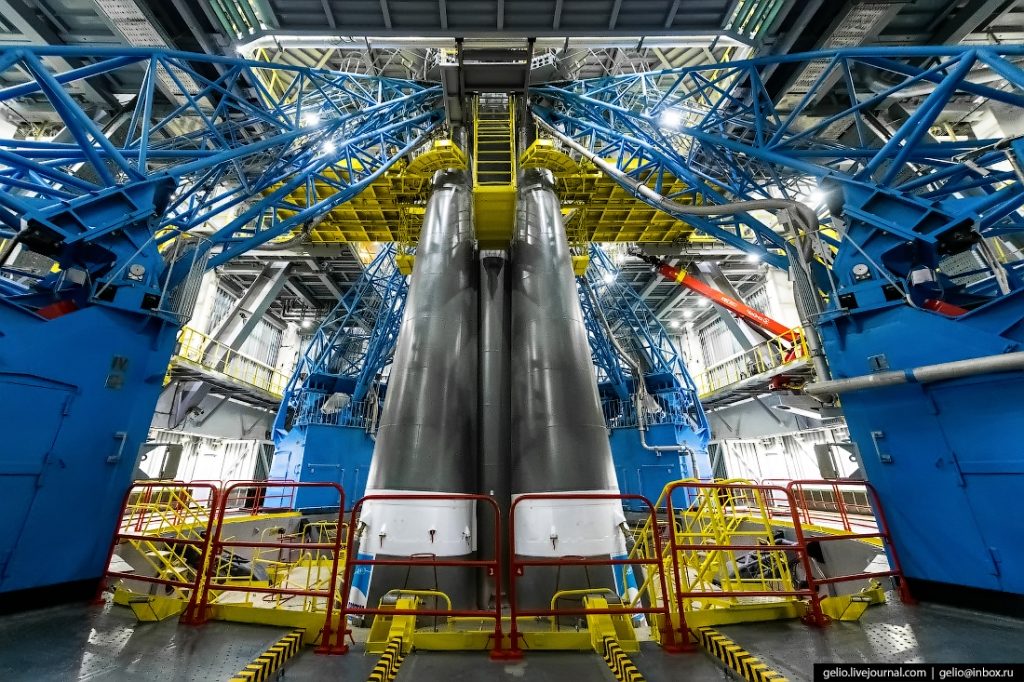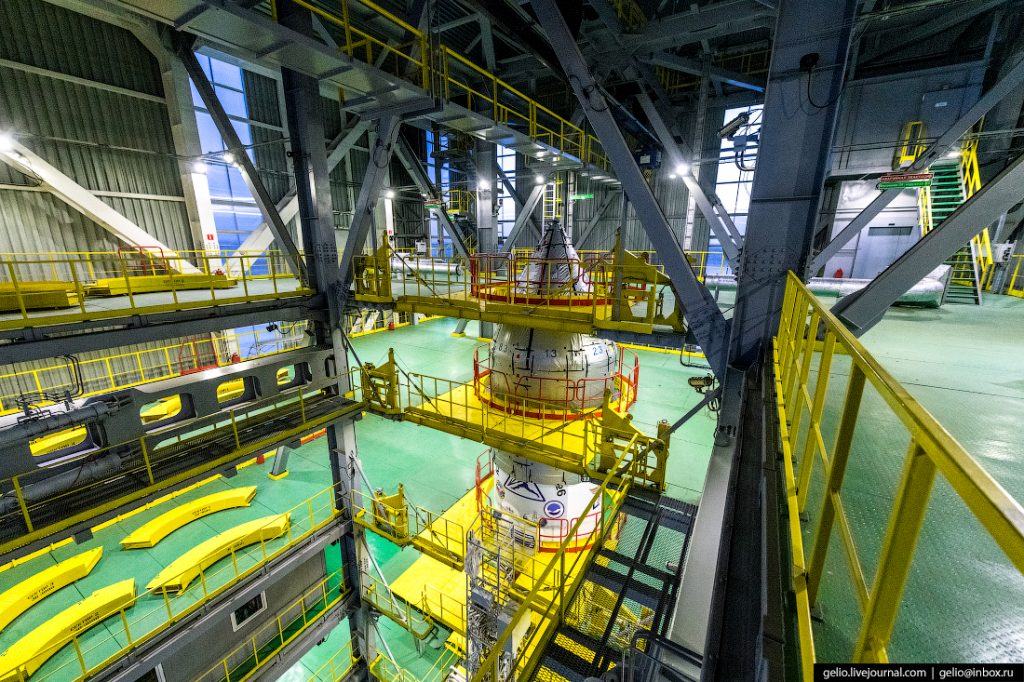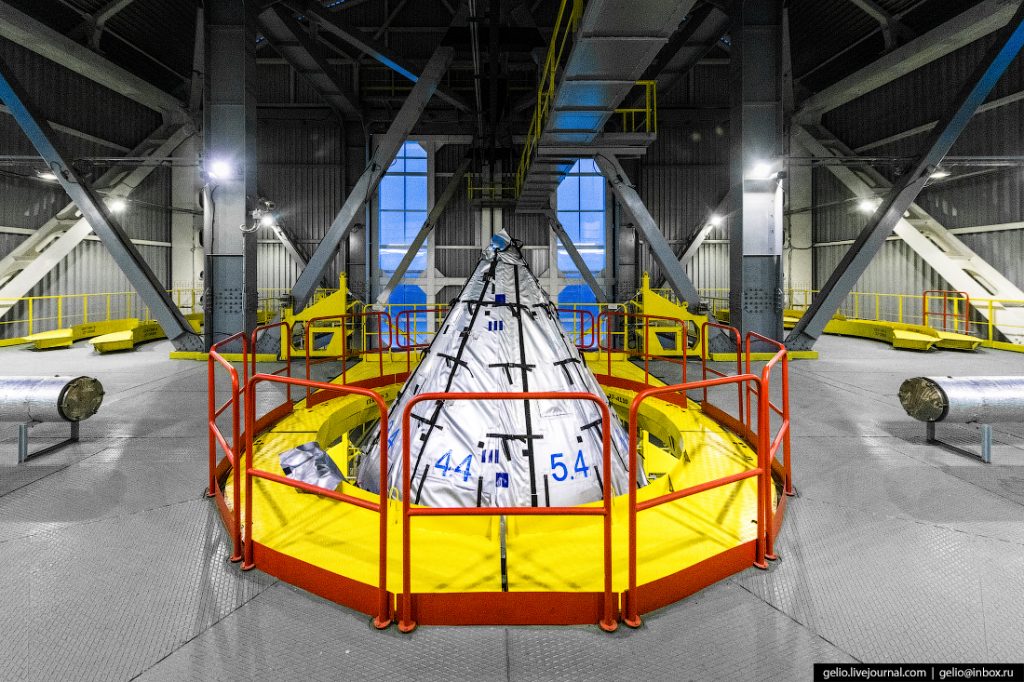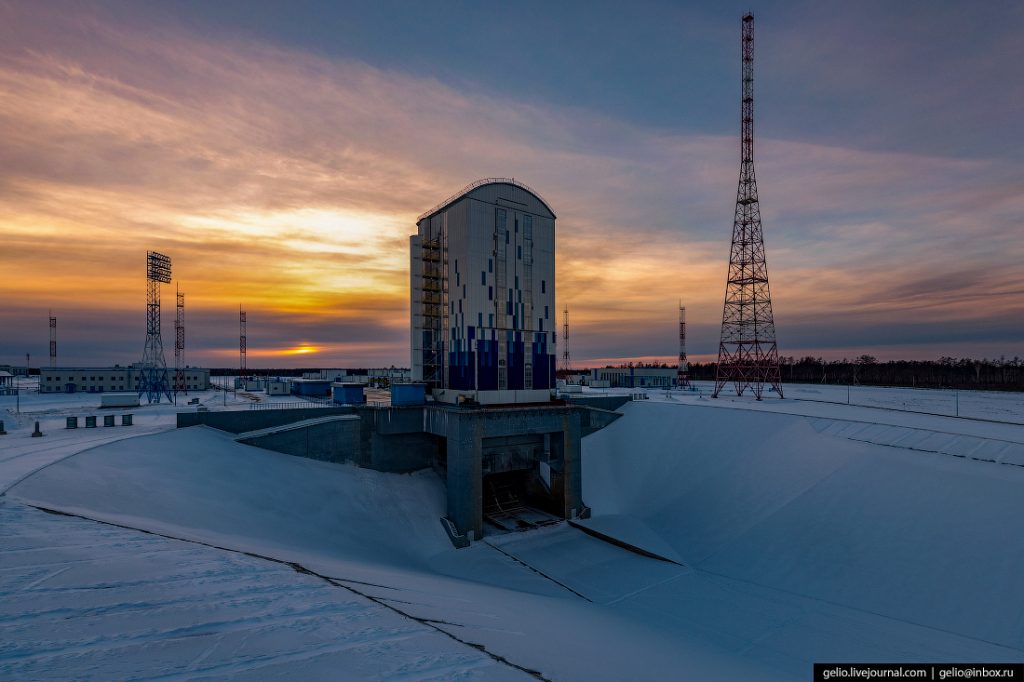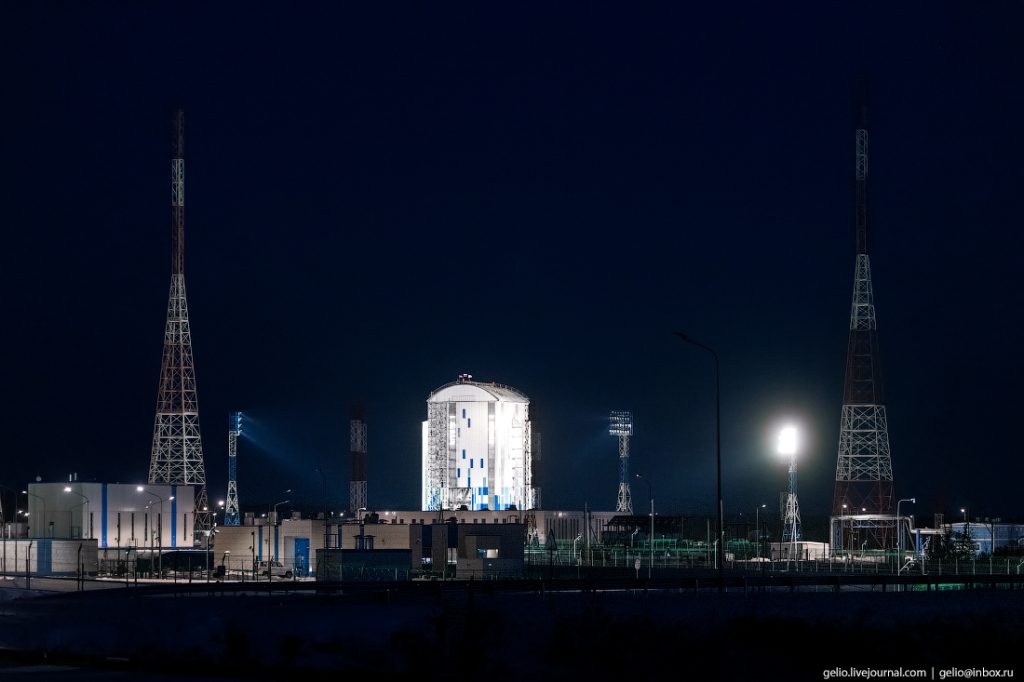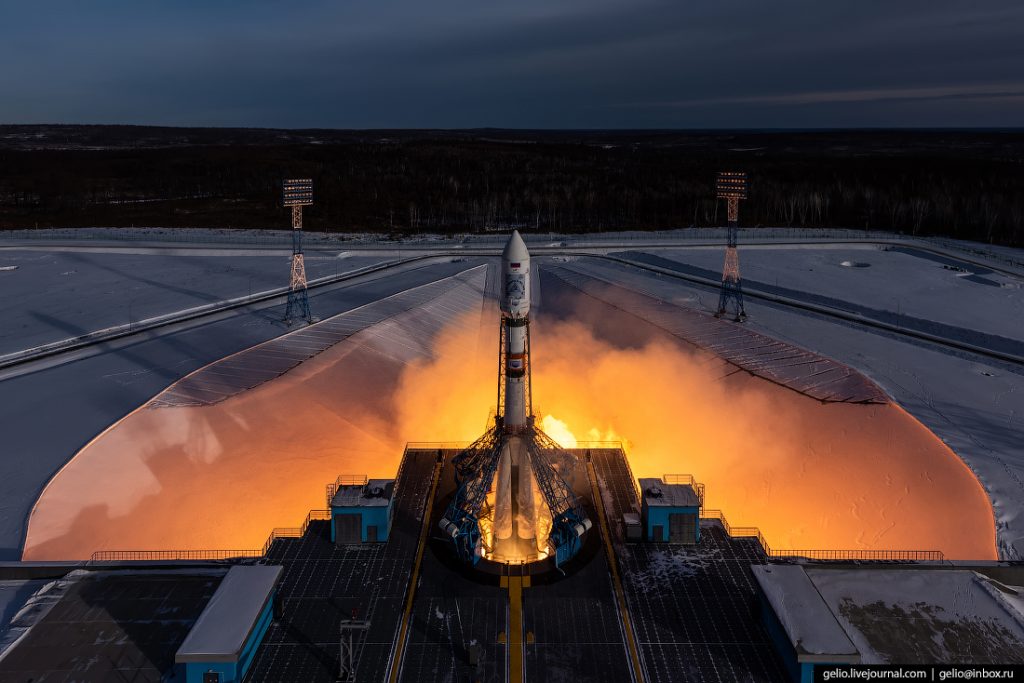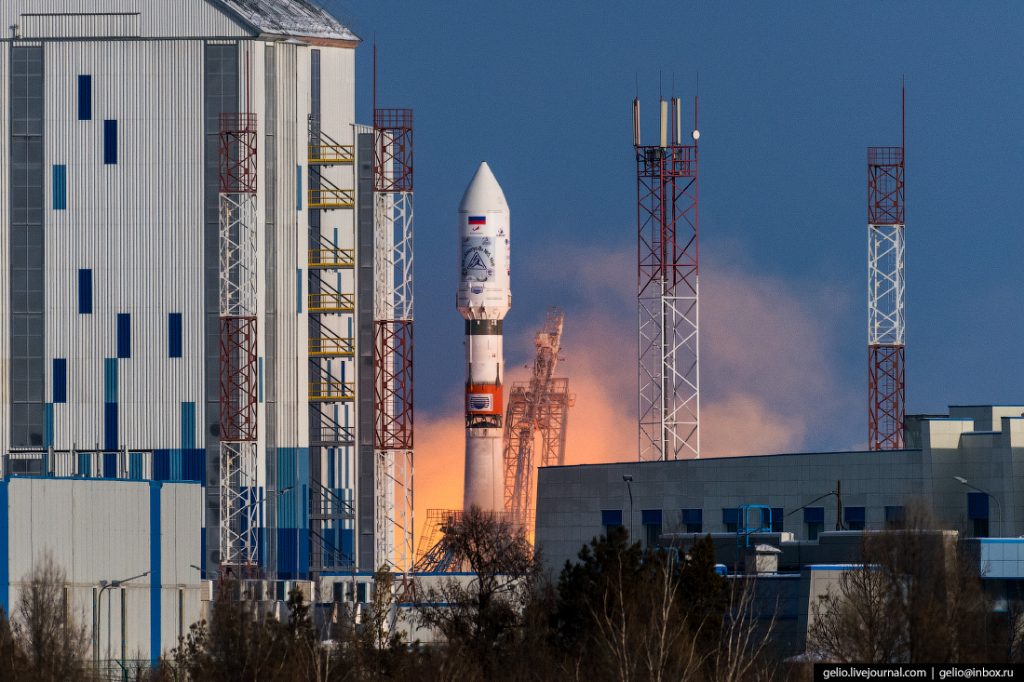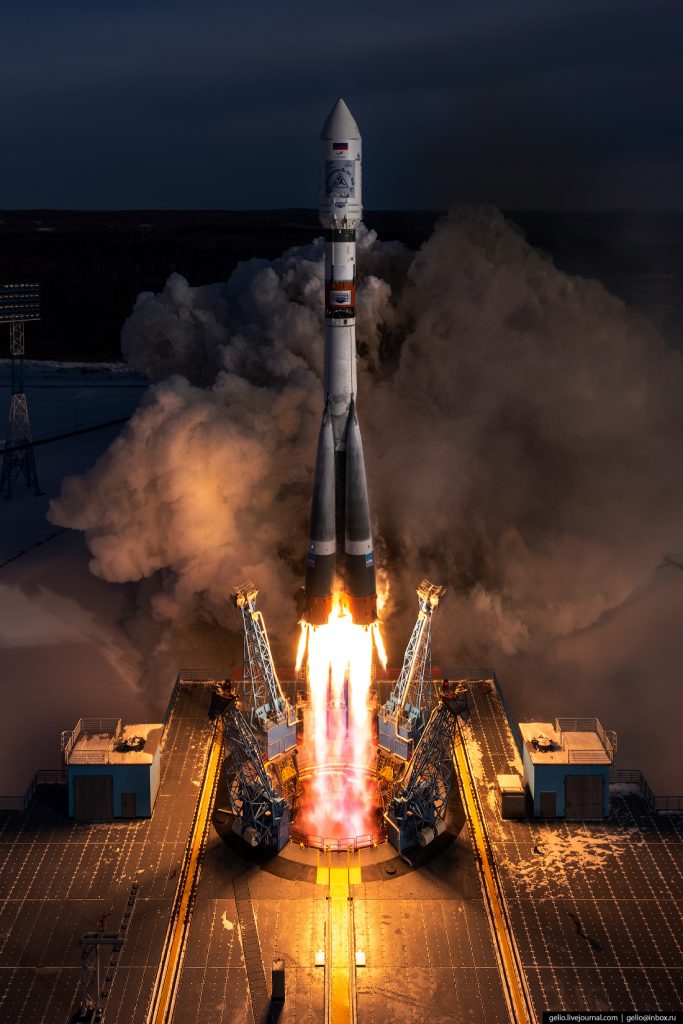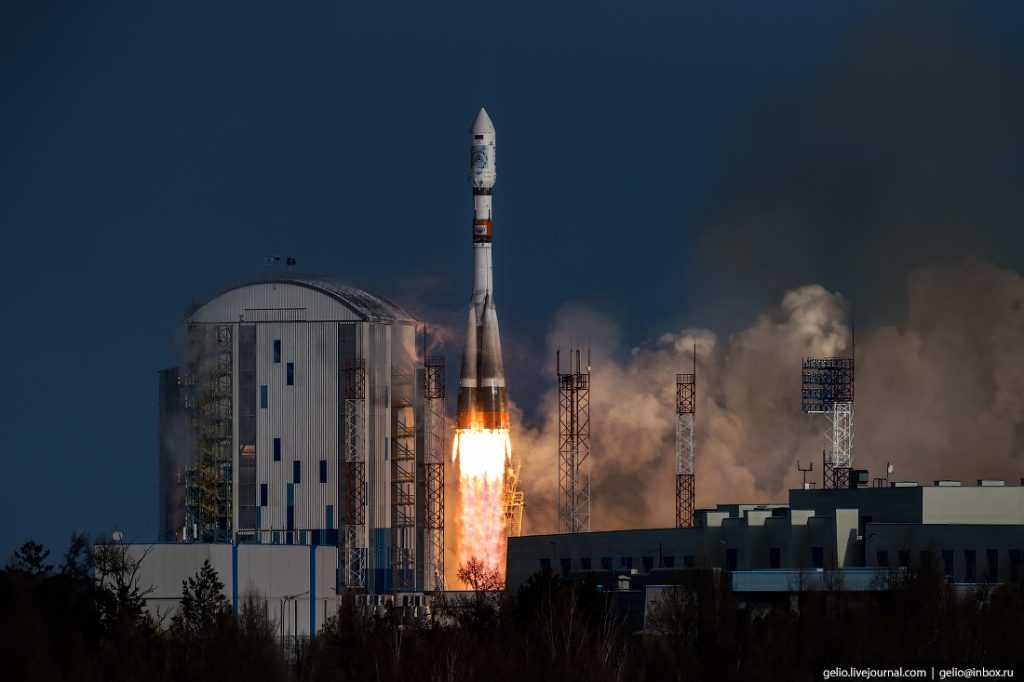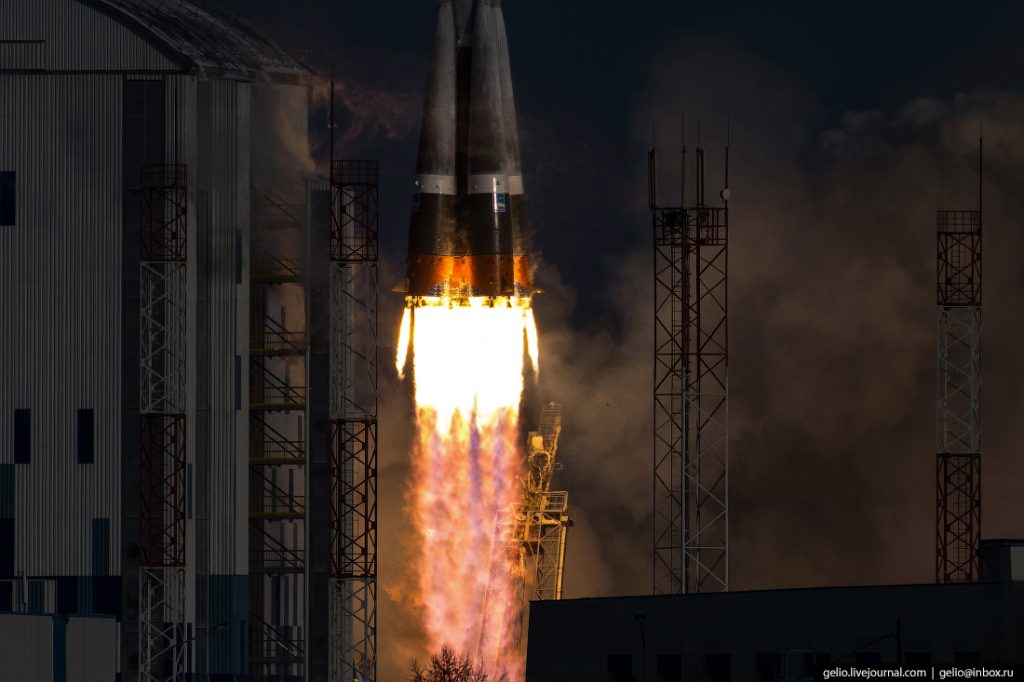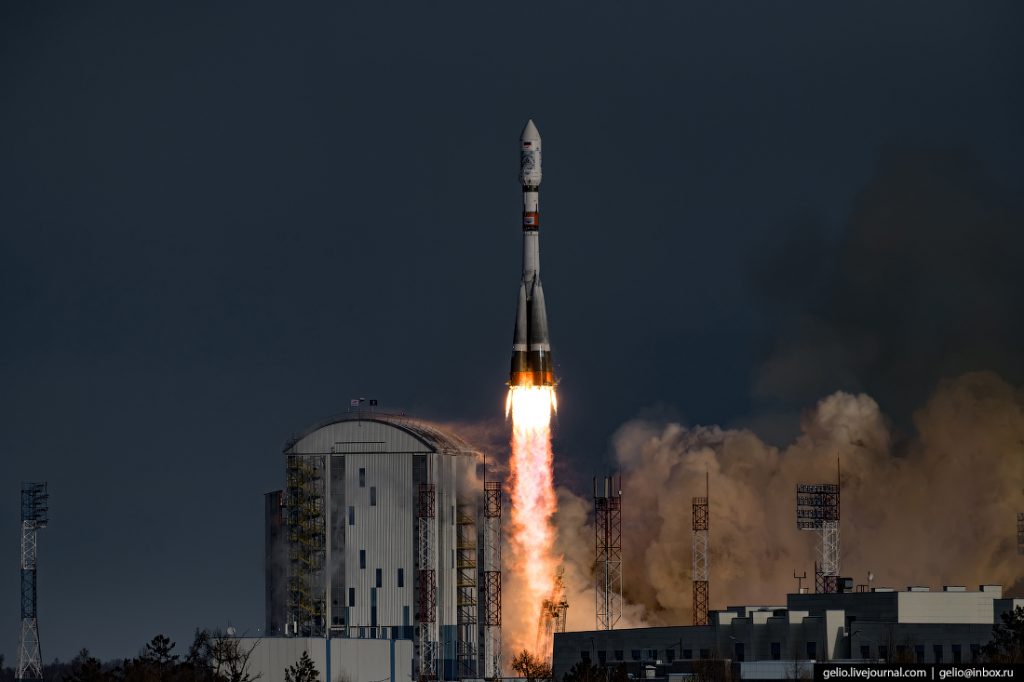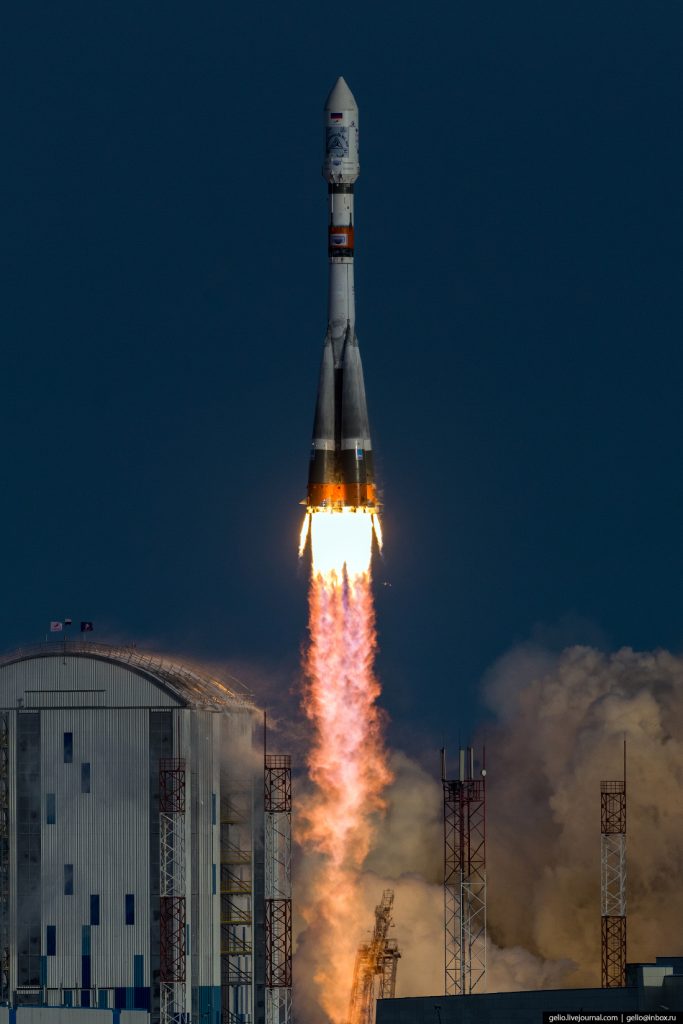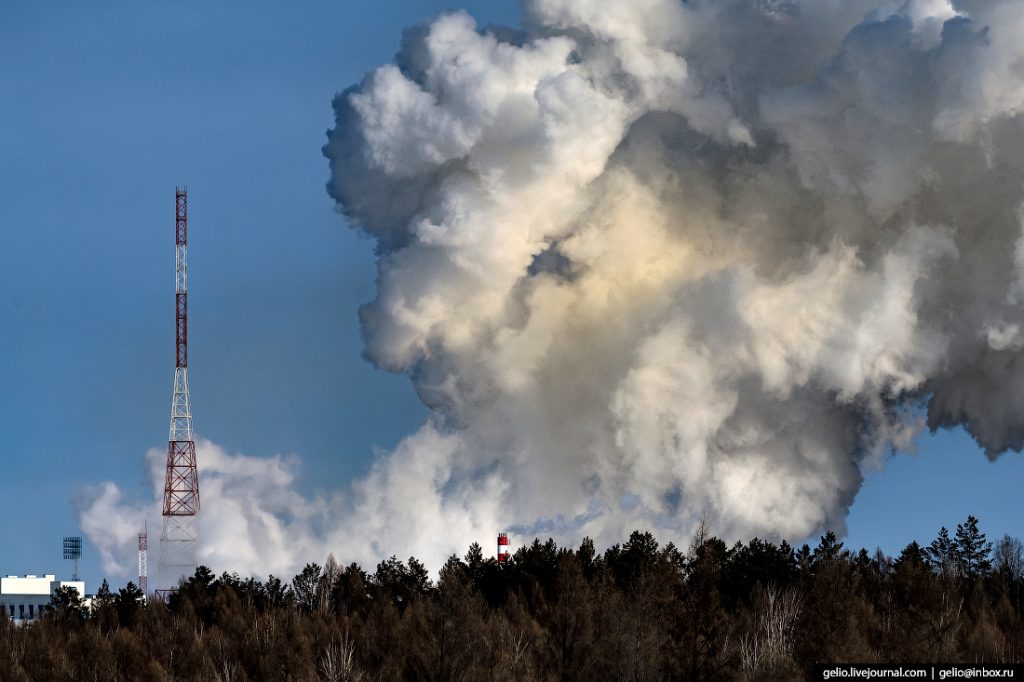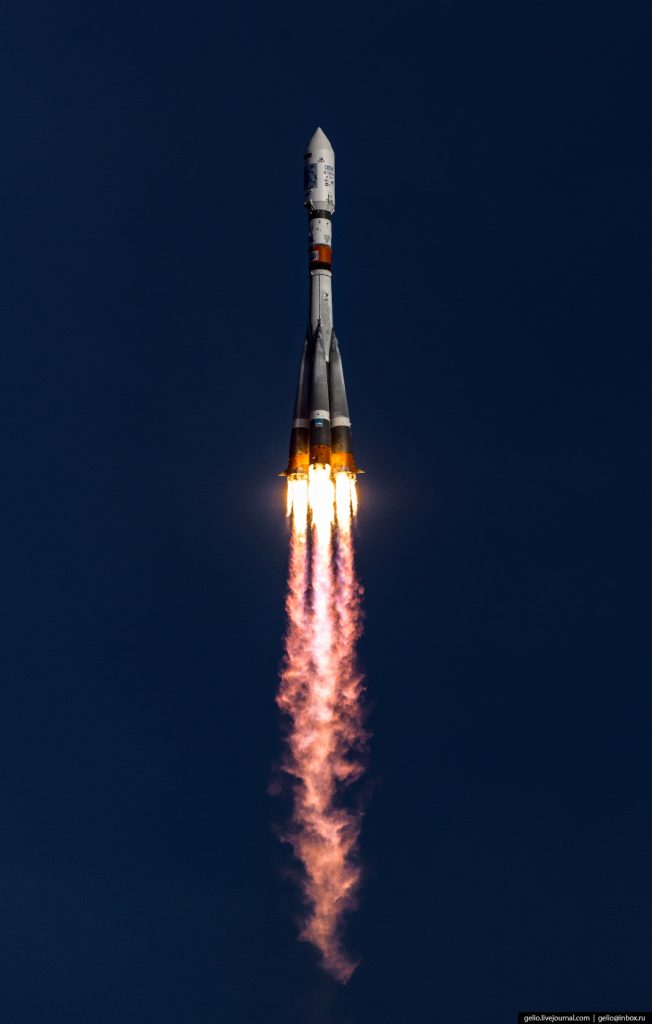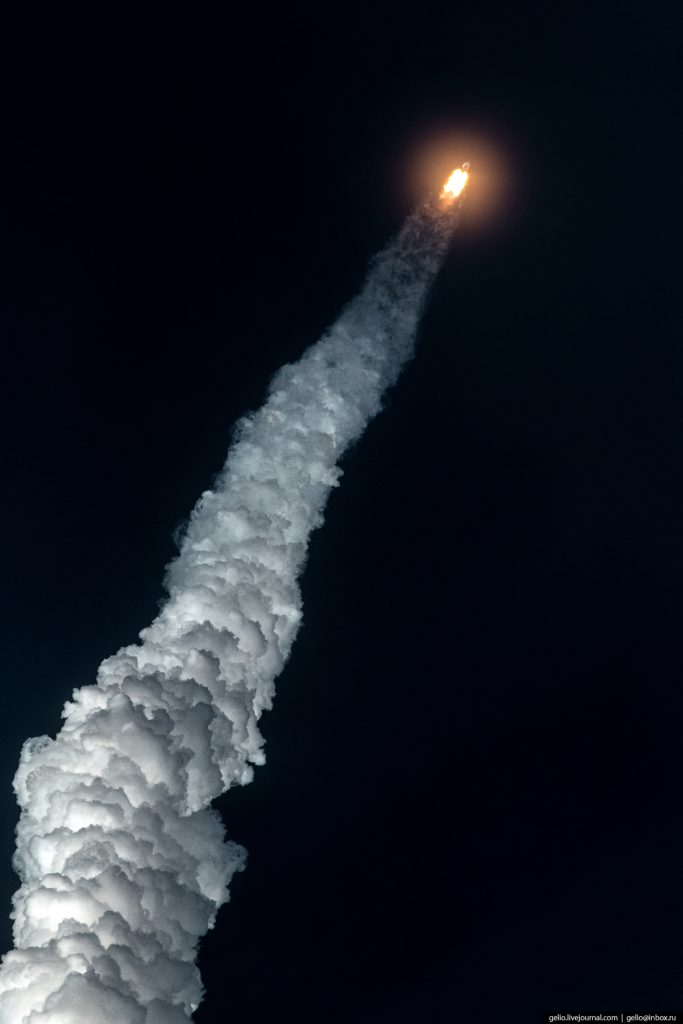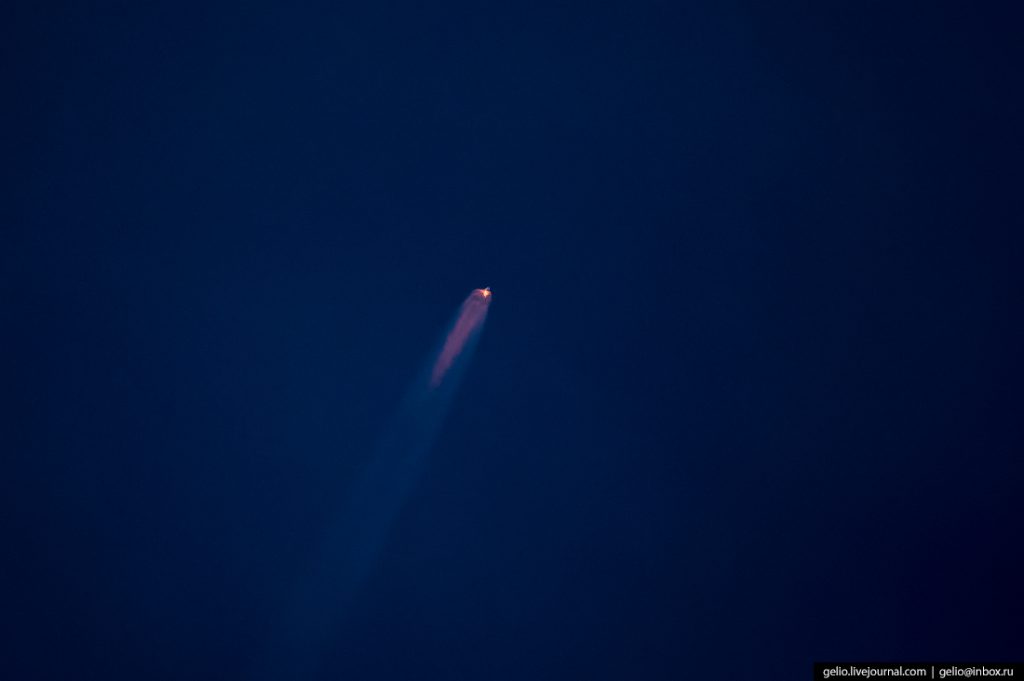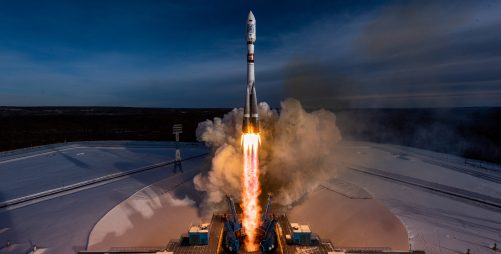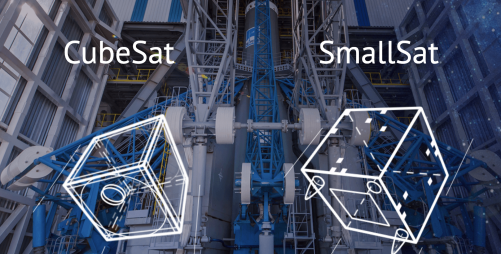FOOTAGE FROM VOSTOCHNY: LAUNCH OF SOYUZ-2.1A
On 27 December 2018, the fourth launch in the history of Vostochny, the first Russian civil cosmodrome, was performed. The Soyuz-2.1a Launch Vehicle successfully lifted off at the designated time, and the separated Fregat Upper Stage injected two Russian Kanopus-V spacecraft and 26 small satellites owned by other countries into their target orbits.
Assembly, Integration and Test Building (AITB) for LV. Assembly of the launch vehicle, its integration with the Space Head Module and preparation of the integrated launch vehicle for moving out to the Launch Complex take place here. The building total area is almost 45,000 m2, which is comparable with six football fields. Assembly of this Soyuz-2.1a Launch Vehicle was completed on 20 December – a week to the lift-off.
Preparation of spacecraft, assembly of the Nose Module and Space Head Module are accomplished in another building — Assembly, Integration and Test Building for Spacecraft, Space Head Modules and Upper Stages (AITB for SC, SHM and US). The Nose Module was composed of the Fregat Upper Stage, two Russian spacecraft and 26 small foreign piggyback satellites. Responsibility for the launch rested with Glavkosmos and GK Launch Services, an operator of the Soyuz-2 commercial launches from the Russian spaceports.
The Soyuz-2.1a Launch Vehicle is a modified Soyuz-2 created on the basis of the Soyuz-U rocket equipped with upgraded control system and engines of the first and second stages. In contrast to the previous version, this rocket features high accuracy of spacecraft injection to the target orbits and increased mass of the payloads delivered into outer space. Soyuz-2.1a is manufactured in Samara by SRC Progress.
The LV first stage is equipped with four RD-107A LOX/ kerosene engines. To support operation of the auxiliary systems, the LV is filled with a small quantity of hydrogen peroxide and liquid nitrogen.
Before transportation to the Launch Complex, the Space Head Module (composed of the Fregat Upper Stage, spacecraft and the head fairing) is already integrated with the Launch Vehicle, and a thermal cover is installed on the fairing. The thermal control unit feeding the air with required parameters inside the fairing via air-ducts provides the temperature and humidity environments adequate for a comfortable stay of spacecraft in there.
Specialists perform final check-out of the Launch Vehicle before moving it out from the AITB.
When in the AITB, the Launch Vehicle is transported on special rail platforms. Transportation of the Launch Vehicle from the AITB to the Launch Complex is done by railroad on a transporter-erector.
In the far section of the AITB, there are composite parts of another rocket — Soyuz- 2.1b. Its launch is scheduled for 2019.
Traditionally, before moving a rocket to the Launch Complex, the personnel involved in the operation line up and are briefed on the transportation tasks. These are representatives of all the support services and units of the Center for Operation of Ground-Based Space Infrastructure and specialists of SRC Progress.
Roll-out of the Integrated Launch Vehicle from AITB to the Launch Complex. The LV is transported to the Launch Pad by railway. The train includes a locomotive, a mobile thermal control unit, a buffer, and a transporter-erector with an LV on it.
The distance between the LV AITB to the Launch table is 4.5 km. The duration of the LV transportation is about an hour.
The transportation operations began far before sun-rise three days before lift-off.
The train is pulled by a locomotive.
The LV is transported to the Launch Pad with the speed of 5 km/h. Thus, the transportation is monitored and secured all the way by the escort team walking along from AITB to the Launch Pad.
The lift-off mass of the LV is over 311 tons. To compare: the mass of the largest passenger aircraft, Airbus A380, is 277 tons.
Near the Launch Pad, the locomotive performs a switching maneuver and couples with the tail end of the train. From now on, it does not pull but pushes the train with the LV to the launch table.
Soyuz-2.1a dimensions: the length of LV with SHM – 46.3 m, the maximum lateral size (between the control fins of strap-on boosters) — 10.3 m, the maximum diameter of the core stage – 2.95 m, the maximum diameter of the 3rd stage – 2.66 m.
While rolling the LV to the launch table, it goes through the Mobile Gantry which is in its initial position. When the LV is erected on the launch table, the Gantry (52 m high, 15 levels) is rolled over the launch table, and thus, the LV is inside the Mobile Gantry. The design of the Gantry provides access to all required operational points on the LV and SHM and supports pre-launch processing even in the most severe weather conditions.
Up to lift-off, the LV is held by support frames. In case of strong wind gusts, the frames together with supply masts stabilize the balance of the rocket. During LV lift-off, the holding structures of the frames detach from the rocket and move aside under the effect of counter-weights to their initial state.
When rolled over the table, the LV is put vertical and then installed onto the table by the erector’s mast.
The operations of putting the LV into a vertical position and LV installation onto the launch table last about half an hour.
As soon as the LV is fixed on the launch table, the transporter-erector is removed from the Launch Pad and the Mobile Gantry is rolled over the table with the LV on it, the gates of the Gantry are then closed. During three days before launch, the LV is inside the Gantry, and there, the crews carry out pre-launch operations: electrical check-outs of onboard systems of LV, Upper Stage, satellites, and LV fueling.
In the underground part of the Launch Pad structure (the main structure of the Launch Complex, which provides preparation and launch of the launch vehicle with SHM), there is a single-ended jet deflector with a gas duct in the form of a tray, designed to divert gases from the lifting off launch vehicle, in order to eliminate the impact of gas jets reflected from the launch pad structure elements.
Soyuz-2.1a LV is inside the Mobile Gantry. Vostochny Spaceport is the only Russian cosmodrome that has a closed type gantry.
Such Gantry allows engineers to prepare the LV for launch in adverse weather conditions.
The fairing is still hidden under the thermal cover.
View of the Mobile Gantry from the outside.
Night before the launch.
LV lift-off.
The Soyuz-2.1a Launch Vehicle with the Russian Kanopus-V spacecraft and piggyback satellites blasted off at 05 hours 07 minutes18 seconds, Moscow time (11 hours 07 minutes 18 seconds, Yakut time). It was the fourth launch performed from the Vostochny Spaceport, the first Russian civil cosmodrome.
Both the launch vehicle and the Fregat upper stage, performed nominally.
This was the 72-nd launch of Fregat upper stages. Having successfully injected satellites into their target orbits the Fregat re-entered the atmosphere at an altitude of 100 km and splashed down in a non-navigable region of the Pacific Ocean.
This is how rocket engine plume looks like.
The propellant burns in the rocket engine and combustion gasses outflow under high pressure from the nozzle.
A large cloud of steam and smoke rises in the frosty air.
After the launch, in accordance with the flight program, the rocket turns around and sets a course for the spacecraft injection into the operational orbit.
One can see here a white trail dragging behind the rocket. This is a condensation trail. It is the result of condensation processes caused by engine exhaust in the atmosphere at a certain altitude. Traces of water vapor or ice crystals are regarded as artificial clouds which later turn into cirrus.
During the ascent certain LV parts (LV stages, fairing) are separated from the rocket in accordance with the mission profile. The size and location of the LV separated parts drop zones are determined by the satellite orbit requirements, mass of the separated parts, and LV performance characteristics. Drop zones are located in the least populated areas and with no or minimal economic activity.
In order to ensure safety in the drop zones, the local authorities of the areas where the drop zones are located, are notified in advance of an upcoming launch, and evacuation of the people from the drop zone to the safe areas.
After the ignition, strap-on boosters burn for 118 seconds and then cut-off, after which they are jettisoned.
The core stage incorporates a single-start engine. It shuts down after 280-290 seconds of flight, after which this stage is also separated, and the rocket continues its ascent and very quickly turns into a small point.
GK Launch Services believe that Russia should rely on commercial launches and increase their number. The company plans to customize Russian launch vehicles as well as spaceports and infrastructure.

